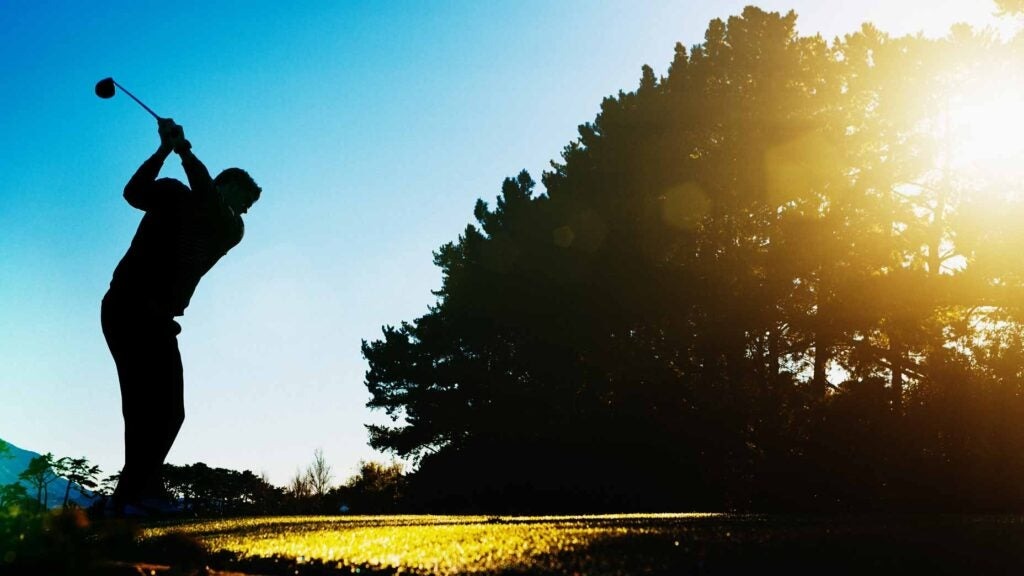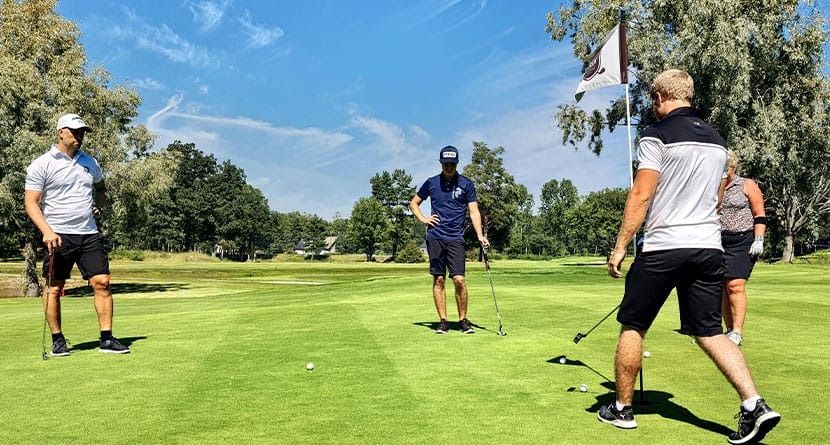Your Bag of Wonders: A Beginner’s Guide to Golf Clubs and Equipment
Stepping onto a golf course for the first time can be both exciting and a little overwhelming. Beyond learning how to swing, there’s a whole world of specialized gear: dozens of different clubs, various types of balls, and an array of accessories. For newcomers, understanding what all this equipment is for, and what you actually need to get started, can feel like navigating a complex maze.
You might wonder: Do I really need 14 clubs? What’s the difference between an iron and a wood? Which golf ball should I use? This article is your simple guide to demystifying golf clubs and essential equipment. We’ll break down what each item does, explain why it matters, and provide smart, easy-to-understand tips to help you make informed choices as a beginner without overspending. Get ready to understand your gear, which is crucial for learning, improving, and truly enjoying the beautiful game of golf!
Why Your Equipment Matters (Beyond Just Hitting the Ball)
It’s tempting to think that all golf is about is swinging a club and hitting a ball. While the swing is vital, your equipment plays a much bigger role than you might imagine:
- Learning & Progression: The right clubs, especially those designed for beginners, are more forgiving. They help you achieve consistent shots more easily, which is incredibly encouraging when you’re just starting and speeds up your learning process.
- Forgiveness: Beginner-friendly clubs are designed to be more “forgiving” on mishits (when you don’t hit the ball perfectly in the center). This means your off-center shots still go reasonably straight and far, reducing frustration.
- Comfort & Confidence: Clubs that are the right length, weight, and have the correct grip size feel comfortable in your hands. This comfort builds confidence, allowing you to swing freely without worrying about your equipment.
- Performance: Each type of club is designed for a specific purpose (distance, accuracy, getting out of trouble). Using the right club for the right situation improves your overall performance on the course.
- Avoiding Frustration: Trying to learn with advanced clubs that are too heavy or unforgiving can lead to constant bad shots, leading to frustration and potentially making you give up the game.
- Cost-Effectiveness: Making smart choices about beginner-appropriate gear saves you money in the long run, as you won’t need to immediately upgrade or buy unnecessary items.
Your Essential Golf Bag: What You Really Need
You’re allowed to carry a maximum of 14 clubs in your golf bag. As a beginner, you definitely don’t need all of them! Here’s a basic overview of what you’ll find in a golf bag and what you really need to start.
- Clubs: The most important part! A mix of different types for different shots.
- Golf Balls: You’ll need plenty, as they often get lost.
- Tees: Small pegs to elevate the ball on the first shot of each hole.
- Divot Tool: For repairing turf after your swing.
- Ball Marker: To mark your ball’s spot on the green.
- Golf Bag: To carry your clubs and gear.
- Golf Glove: (Optional but recommended) For better grip and blister prevention.
- Appropriate Footwear & Clothing: For comfort and course rules.
- Water/Snacks: For hydration and energy during your round.
Demystifying Golf Clubs: What Each One Does
Golf clubs are designed to hit the ball different distances and in different ways. They are generally categorized by their shape and purpose.
1. The Driver (The Big Hitter)
- Purpose: The driver is used for the longest shots, typically from the teeing ground (the start of each hole) on par 4 and par 5 holes. Its goal is to send the ball as far as possible down the fairway.
- Characteristics: It’s the longest club in your bag, has the largest head (often made of titanium or composite materials), and has the lowest “loft” (the angle of the clubface), which sends the ball on a lower, longer trajectory.
- Beginner Tip: While exciting, the driver can be challenging to hit straight. As a beginner, you might start by using a fairway wood or even a hybrid for more control off the tee until your swing becomes more consistent.
2. Fairway Woods (The Versatile Long-Hitter)
- Purpose: Fairway woods (like a 3-wood or 5-wood) are used for long shots from the fairway (the short grass in the middle of the hole) or sometimes from the tee on shorter holes where accuracy is key.
- Characteristics: They have smaller heads and more loft than a driver, making them easier to hit off the ground.
- Beginner Tip: A 3-wood or a 5-wood can be a great alternative to a driver for beginners, offering more control from the tee while still providing good distance.
3. Hybrids (The Best of Both Worlds)
- Purpose: Hybrids are a popular club that combines features of both fairway woods and irons. They are designed to be easier to hit than long irons (like a 3-iron or 4-iron).
- Characteristics: They have a larger, more wood-like head than an iron, but a shorter shaft. This design makes them more forgiving and easier to get the ball airborne.
- Beginner Tip: Many beginner sets include hybrids (often a 4-hybrid or 5-hybrid) to replace difficult-to-hit long irons. They are a fantastic addition for newcomers.
4. Irons (The Precision Tools)
- Purpose: Irons are used for a wide range of shots from the fairway, rough (longer grass), or even from the tee on short holes (par 3s). They are numbered from 3 to 9 (and sometimes 1 or 2, but these are very hard to hit). Lower numbers mean less loft and more distance.
- Characteristics: They have flat, angled clubfaces (blades or cavity-backs) and shorter shafts than woods.
- Long Irons (3, 4): For longer approach shots. Often replaced by hybrids for beginners.
- Mid Irons (5, 6, 7): For medium-range approach shots.
- Short Irons (8, 9, Pitching Wedge): For shorter, more accurate shots towards the green.
- Beginner Tip: As a beginner, you’ll mostly use mid and short irons (like 7-iron, 8-iron, 9-iron) for control and consistency. Look for “cavity back” irons, which have weight distributed to the edges, making them more forgiving.
5. Wedges (The Green Zone Specialists)
- Purpose: Wedges are a type of short iron used for very precise shots around the green – getting the ball up high, out of bunkers, or out of thick rough.
- Characteristics: They have high loft angles (more angled clubface) to hit the ball high and with lots of spin, making it stop quickly.
- Pitching Wedge (PW): Often included in iron sets, for shots from 100-120 yards out, or pitching around the green.
- Sand Wedge (SW): Specifically designed for getting the ball out of sand bunkers.
- Lob Wedge (LW): Has the highest loft, for very high, short shots that land softly.
- Beginner Tip: A pitching wedge and a sand wedge are usually sufficient for beginners. Don’t worry about a lob wedge until you’re more advanced.
6. The Putter (The Final Touch)
- Purpose: The putter is used only on the putting green to roll the ball into the hole.
- Characteristics: It has a flat face and a unique shape designed for accuracy and feel on the green.
- Beginner Tip: Spend time practicing putting. It’s often said, “Drive for show, putt for dough!” A good putter is essential for lowering your score. Beginners can choose either a “blade” style (simpler) or a “mallet” style (more forgiving).
7. Complete Beginner Sets (The Smart Start)
- Purpose: Many manufacturers offer “complete beginner sets” that usually include a driver, a fairway wood or hybrid, a few key irons (like 6, 8, PW), a sand wedge, and a putter.
- Why it’s important: These sets are specifically designed to be forgiving and easy for new players to hit. They also provide a balanced selection of clubs without overwhelming you. They are usually much more affordable than buying clubs individually.
- Beginner Tip: This is highly recommended for newcomers. It gives you all the clubs you need to learn and play, without unnecessary cost or complexity.
Beyond Clubs: Other Essential Golf Equipment
While clubs are primary, a few other items are non-negotiable for a round of golf:
- Golf Balls: Beginners often benefit from “distance” or “forgiveness” golf balls, which are designed to fly straighter and further. They are usually more durable too. You will lose balls, so buy a good quantity!
- Golf Tees: Small pegs used to elevate the ball on the teeing ground. They come in various lengths (use longer ones for drivers, shorter ones for irons or fairway woods).
- Golf Bag: To carry your clubs!
- Stand Bags: Have two retractable legs, ideal for walking.
- Cart Bags: Designed to fit on golf carts, typically larger.
- Carry Bags: Lighter, very basic, good for quick practice.
- Golf Glove: (Optional but recommended) Worn on your non-dominant hand (left hand for right-handed golfers). It provides better grip and helps prevent blisters.
- Divot Repair Tool & Ball Marker: Essential for course etiquette. Use the divot tool to repair any marks your ball makes on the green. A ball marker is a small coin or flat disc used to mark your ball’s position on the green.
- Golf Shoes: Provide stability and grip during your swing. They come with “spikes” (plastic nubs) or can be “spikeless” (more like athletic shoes).
- Appropriate Clothing: Comfortable athletic wear, often with a collared shirt for golf course rules. Dress for the weather (rain gear, hats).
Smart Buying Tips for Beginner Golfers (Getting Started Wisely)
- Start with a Beginner Set: As mentioned, this is often the most cost-effective and sensible way to get all the clubs you need.
- Don’t Overspend: Your swing will change as you improve, and your equipment needs might evolve. There’s no need for the most expensive gear initially.
- Consider Used Clubs: Many pro shops or online retailers sell good quality used clubs or full sets. This is a great way to save money.
- Comfort is Key: Always prioritize how a club feels in your hands and through your swing. If it doesn’t feel right, it’s not the right club for you.
- Get Fitted (Later On): Once you’ve been playing consistently for a while and have a more repeatable swing, investing in a professional club fitting can make a huge difference, but it’s not necessary when you’re just starting.
Conclusion: Your Pathway to Golfing Enjoyment
The world of golf clubs and equipment might seem vast, but understanding the basics is simpler than you think. Each club has a purpose, designed to help you navigate the course effectively. By focusing on essential gear like a forgiving beginner set of clubs, appropriate golf balls, and basic accessories, you’ll be well-equipped to learn, improve, and truly enjoy the game.
Remember, the right equipment is your partner on the course, supporting your comfort, boosting your confidence, and enhancing your performance. Invest wisely, focus on learning, and embrace the journey. Your bag of wonders awaits – go enjoy the beautiful game of golf!





Leave a Reply